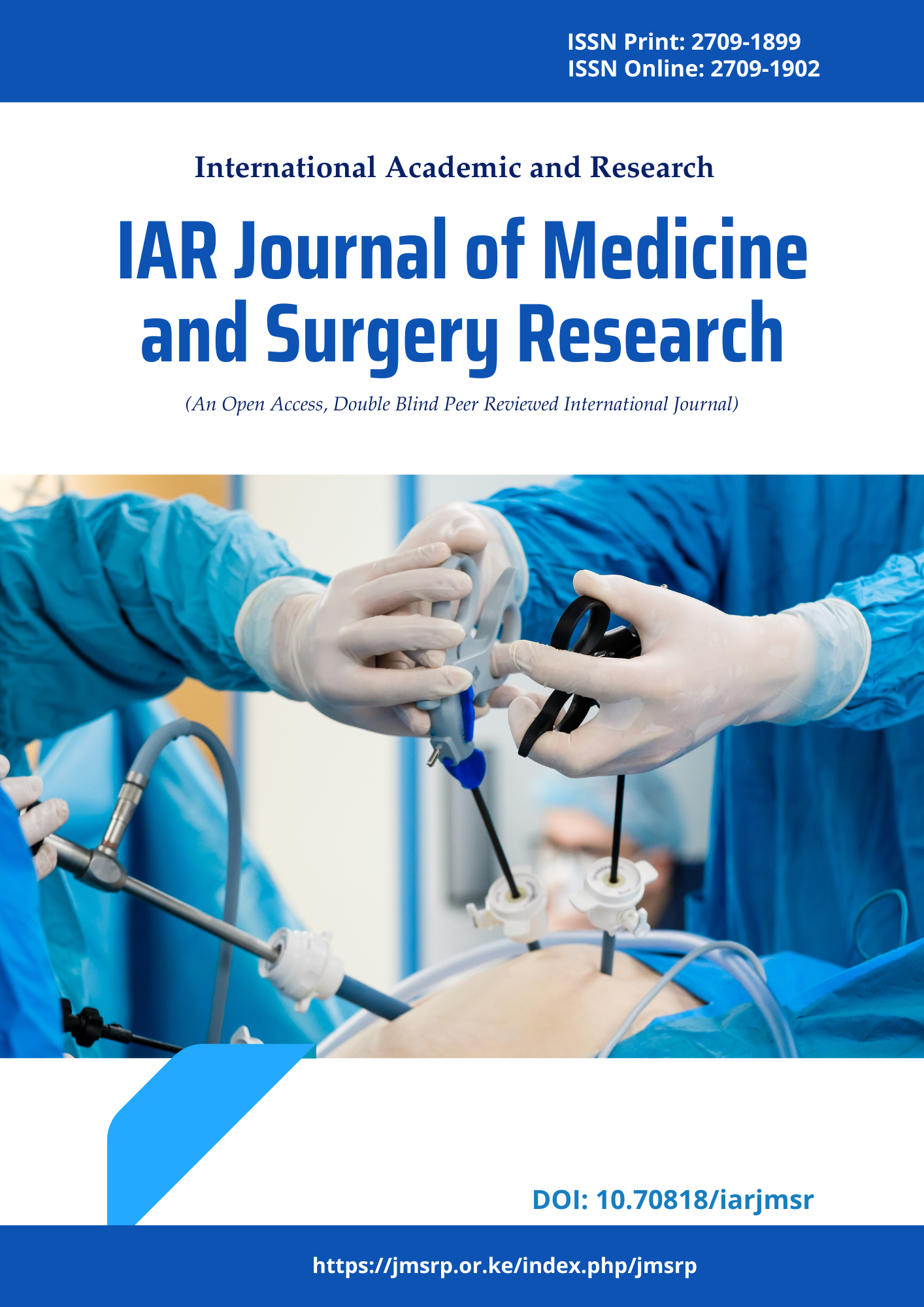Role of Magnetic Resonance Imaging in Evaluation of CompressiveMyelopathy
DOI:
https://doi.org/10.70818/iarjmsr.2020.V01i01.02Keywords:
Magnetic Resonance Imaging, tuberculosis spine, compressive myelopathy.Abstract
Introduction: Myelopathy describes any neurologic deficit related to
the spinal cord. Myelopathy is usually due to compression of the spinal cord by osteophyte or extruded disk material in the cervical spine. MRI should be used as the imaging modality of choice for evaluation of the spinal cord after injury. CT and plain radiography should be used to assess the bony anatomy of the spine in patients with Spinal Cord Injury (SCI). MR imaging has become the technique of choice in the assessment of lesions of the spine and spinal cord. MR imaging provides accurate localization of intramedullary, intraduralextramedullary, and extradural tumors. Ependymomas and low-grade astrocytomas are the most common intramedullary tumors. Malignant spinal cord compression is one of the most dreaded complications of cancer. Materials and Methods: The study was conducted on 40 patients who were referred from various departments of Rajindra hospital Patiala and other hospitals to MRI centre in department of Radiodiagnosis, GMC and RHP. Case selection-40 patients, who were clinically suspected as cases of compressive myelopahy, were investigated with MRI and analysed statistically. Results: In our present study of 40 cases of compressive myelopathy different causes for compression were trauma (45%), infectious causes (35%), primary neoplasms (10%) and secondary neoplasms (10%). In our study, the most common site of trauma was thoracic spine (55.5%) and then the cervical (33.3%) and lumbar spine (11.1%). In our study cord changes in the form of edema or contusion in the patients of traumatic spine injury were noted in 72.2% of cases. The most common changes were cord contusion and cord hemorrhage. Among the non-traumatic pathologies, cord changes were observed in 37.7% of cases of spinal infection/TB, in 75% cases of metastases and in all the cases of primary neoplasms of spinal cord. Conclusion: MRI is the definitive modality in assessing soft tissues of the spine and spinal cord abnormalities. It is the best modality to evaluate cord edema / contusion and integrity of the intervertebral discs and ligaments. MRIis very sensitive and considered the imagingmodality of choice to detect and characterize the spinal tumors and spinal infections.
















